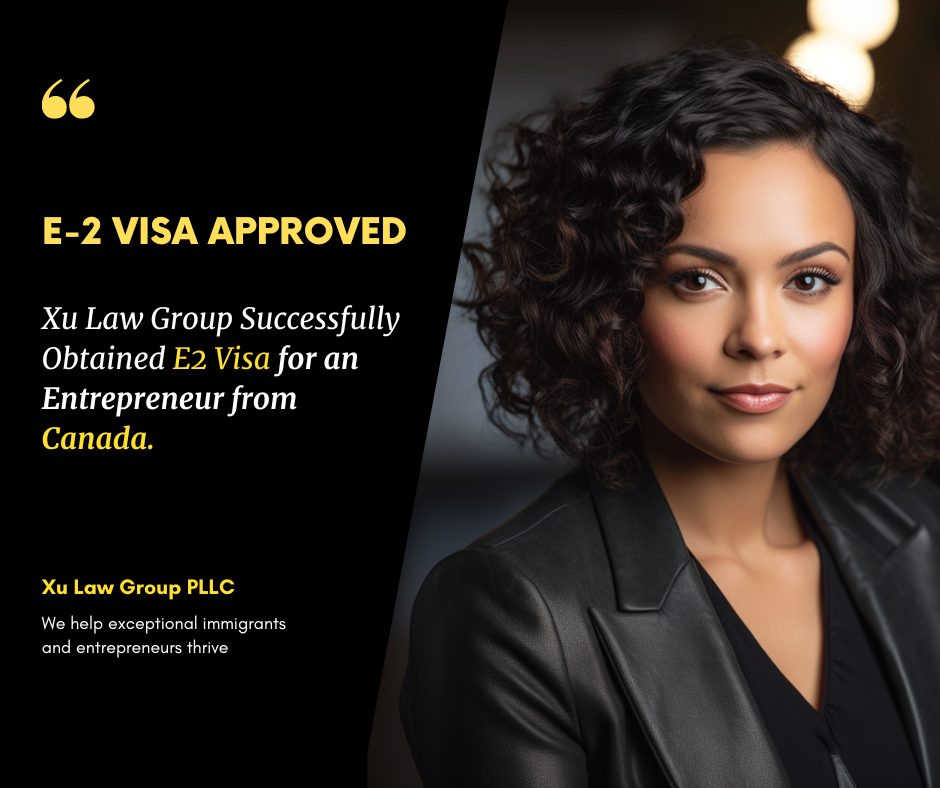
EB1B Visa - The Ultimate Guide 2023
The EB-1B visa is reserved for outstanding professors and researchers who have achieved international recognition. Contact Xu Law Group’s EB-1B Visa Lawyers today for a comprehensive evaluation to start your journey to the USA.
What is an EB1B visa?
The EB-1B visa is a subcategory of the EB-1 extraordinary ability green card. This subcategory is designed for professors and researchers who have gained international recognition in their respective fields. In order to qualify, the applicant must have at least 3 years of experience in teaching or conducting research in their academic area.
The EB-1B does not mandate a PERM labor certification. However, applicants must be sponsored by an employer and must provide evidence that they are pursuing either a tenured position or a research position of a comparable position.
What are the EB-1B Visa requirements?
The EB-1B requires that foreign nationals who have received internationally recognized awards such as the Nobel, Abel, and Fields Medals are eligible to apply for EB-1B. If applicants have not won such awards, they must demonstrate international recognition by meeting at least two of the following six criteria:
Receipt of major prizes or awards for outstanding achievement
Professors and researchers can meet the EB-1B criterion for international recognition through various means, such as receiving awards from renowned national institutions or obtaining significant research grants in their field. Some examples of qualifying prizes and awards include the A.M. Turing Award, Harvey Prize, and Wolf Prize.
Membership in associations that require their members to demonstrate outstanding achievement
Applicants who are members of exclusive associations or organizations that have strict criteria for membership may also meet this requirement. For instance, membership in the National Academy of Science, IEEE (Institute of Electrical and Electronics Engineers) fellowship, and AAAI (Association for the Advancement of Artificial Intelligence) fellowship are all acceptable.
Published material in professional publications written by others about the noncitizen's work in the academic field
Professional publications covering the applicant’s personal story or the applicant’s academic achievements may meet this criterion. Examples of major media and publications include media outlets and press such as the New York Times, Discovery Magazine, ABC Science, Cosmos Magazine, Scientific American, and National Geographic.
Participation, either on a panel or individually, as a judge of the work of others in the same or allied academic field
Applicants must demonstrate that they have been invited to judge or review the work of others, which can be shown through activities such as reviewing journal articles, peer-reviewing scholarly articles, and participating in government research funding programs.
Original scientific or scholarly research contributions in the field
This criterion for EB-1B eligibility requires that professors or researchers can show evidence of their original contributions to their disciplines. Such evidence could include published materials discussing the significance of the applicants’ original work, approved patents with evidence of commercial application, testimonials from industry experts, and significant citations of their scholarly research.
Evidence of authorship of scholarly books or articles (in scholarly journals with international circulation) in the field
To meet this criterion, EB-1B applicants must demonstrate their publications in books or professional journals with an international readership. Some notable professional journals include Science, JSTOR, Wiley, and ProQuest.
If you’re unsure if you’re qualified for an EB-1B visa, consult an immigration lawyer now.
What is the EB-1B visa application process?
Step 1: File I-140 Petition
The EB-1A visa offers a self-petition option and does not require PERM labor certification. To apply, applicants must file an I-140 petition. Once approved, they will receive an immigrant visa number.
Step 2: File I-485 Petition
When the priority date becomes current, applicants will be allowed to file form I-485 to adjust their status. However, if applicants are outside the U.S., they will go through consular processing instead.
Step 3: Biometrics service
Once form I-485 is filed, USCIS will send a notice for a biometrics services appointment at a nearby Application Support Center (ASC) to collect fingerprints, photographs, and/or signatures.
Step 4: (optional) Interview
USCIS officials will review the case to determine whether an interview is necessary. If USCIS schedules applicants for an interview, they will be required to appear at a USCIS office to answer questions under oath or affirmation regarding form I-485.
Step 5: (optional) Request for additional evidence
Although not all applicants receive requests for additional evidence, USCIS may send a request for additional evidence if:
Applicants did not submit all the required evidence;
The evidence applicants submitted is no longer valid; or
The officer needs more information to determine applicants’ eligibility.
The request will indicate what evidence is needed. The request will also tell applicants where to send the evidence and the date by which they must respond to the request. If applicants do not respond to the request timely, the officer may deny their applications.
Step 6: Receive the decision
Applicants may check their case status online or call USCIS Contact Center at 800-375-5283. When USCIS makes a decision on the application, they will send applicants a written decision notice. If applicants are approved, they will receive the actual green card later.
What is the EB1B processing time?
The actual processing time varies for different service centers and visa categories. You can check the average processing time on the USCIS Check Case Processing Times.
EB1B visa processing time is faster than EB2 and EB3 because
EB1B doesn’t require PERM labor certification
EB1B allows applicants to file I-140 and I-485 simultaneously
EB1B allows premium processing with $2,500
Form I-140: As of February 2023, 80% of cases are completed within 20 months at the Nebraska Service Center, and 22 months at the Texas Service Center.
Form I-485: As of February 2023, approval for form I-485 can take 29 months at the California Service Center, 12.5 months at the Nebraska Service Center, and 31.5 months at the Texas Service Center. After I-485 is approved, USCIS may take up to 6 months to issue the physical green card.
Hence, the EB-1 green card application process could be completed in as little as one year, if everything goes smoothly. However, if applicants are Indian or Chinese applicant using regular processing, it could take up to three and a half years for their EB-1 green card to be processed.






